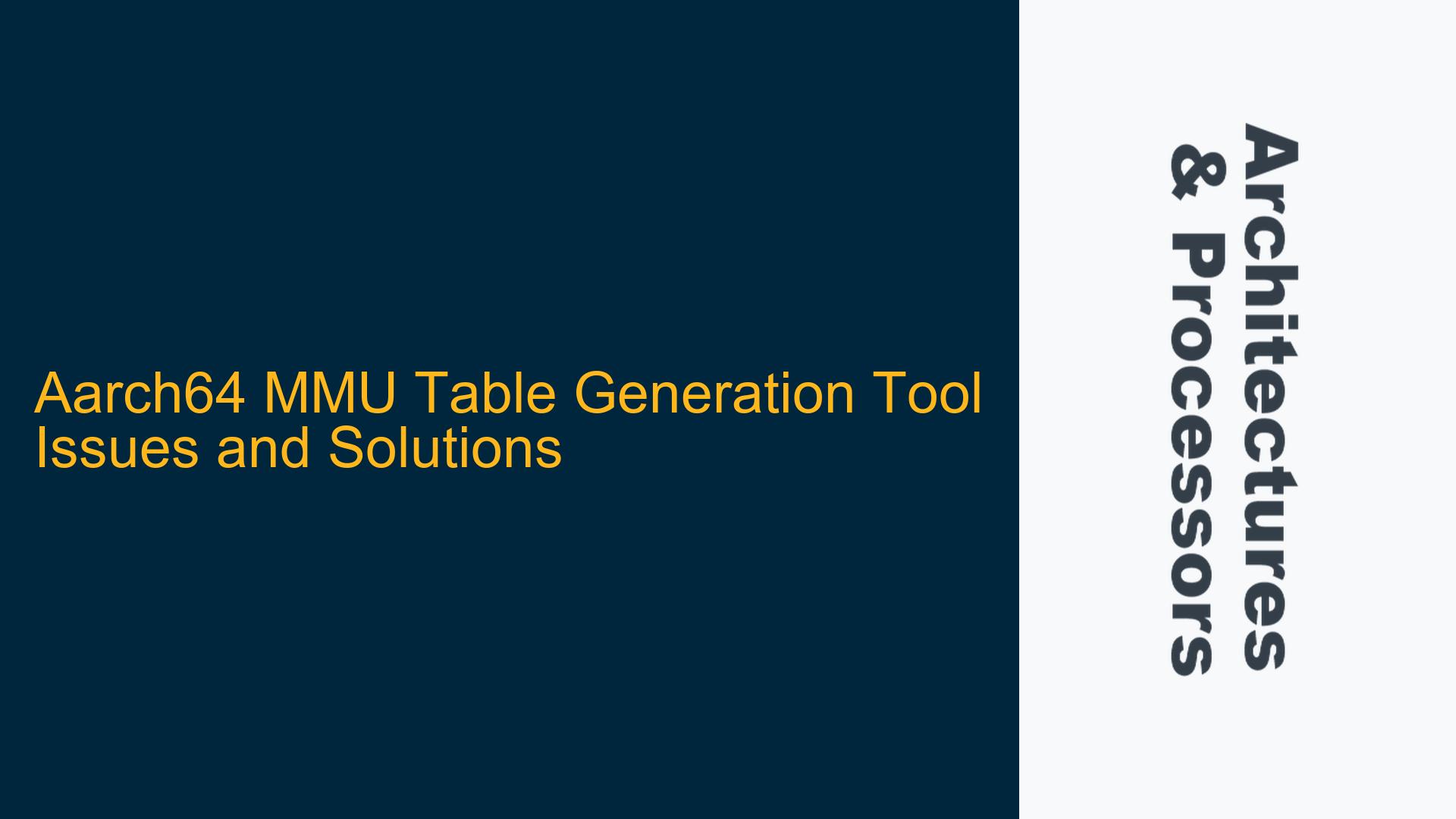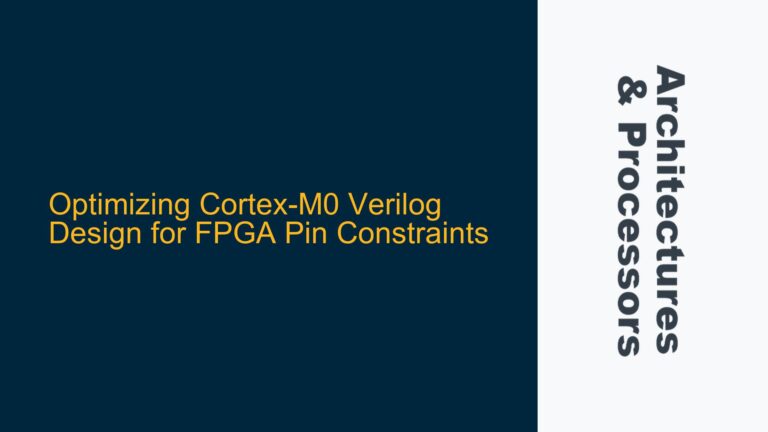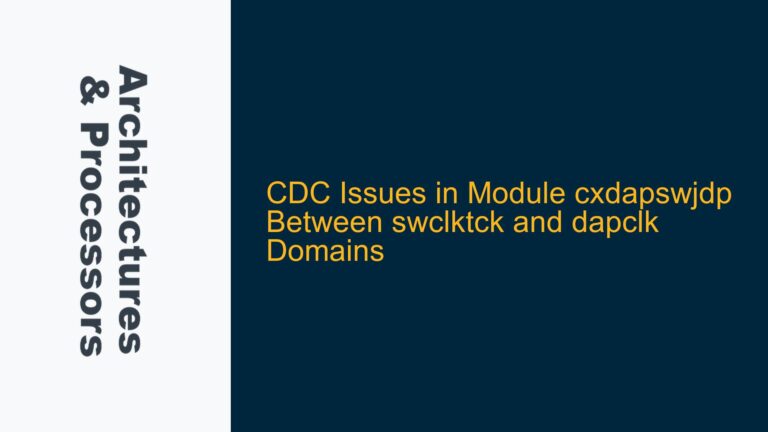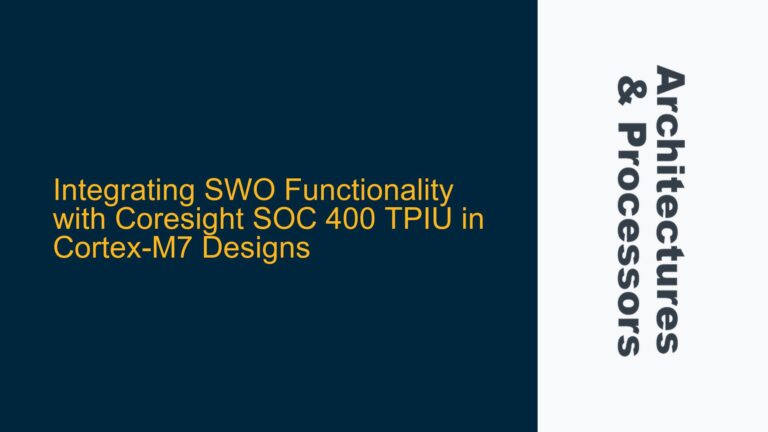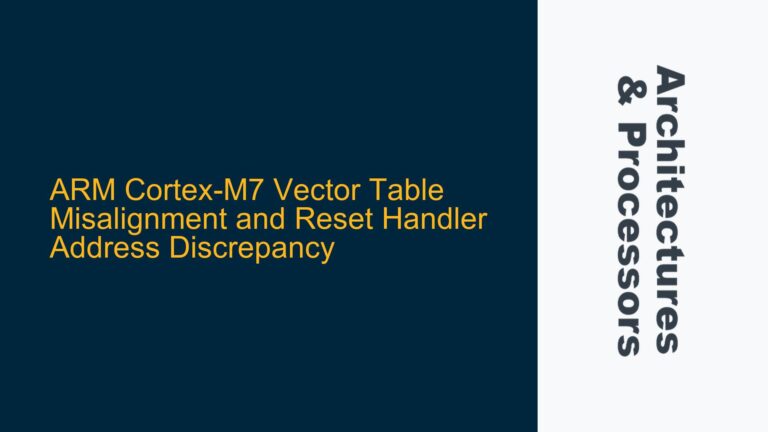ARM Cortex-A Series MMU Table Generation Challenges in Bare Metal Environments
The ARM Cortex-A series processors, particularly those utilizing the Aarch64 architecture, rely heavily on the Memory Management Unit (MMU) for virtual memory management. The MMU is responsible for translating virtual addresses to physical addresses, enabling features like memory protection, virtual memory, and efficient memory utilization. In bare metal environments, where there is no operating system to manage these tasks, developers must manually configure the MMU tables. This process is complex and error-prone, often leading to issues such as incorrect memory mappings, page table walk failures, and performance bottlenecks.
The Aarch64 architecture uses a multi-level page table structure, which can be up to four levels deep, depending on the configuration. Each level of the page table must be correctly populated with descriptors that define the memory regions, their attributes, and access permissions. The complexity of this structure, combined with the need for precise configuration, makes the generation of MMU tables a challenging task. Errors in the MMU table configuration can result in system crashes, data corruption, or security vulnerabilities.
One of the primary challenges in generating MMU tables for Aarch64 processors is ensuring that the tables are correctly aligned and formatted according to the architecture’s specifications. The Aarch64 architecture requires that page tables be aligned to specific boundaries, and each entry in the table must adhere to a strict format. Misalignment or incorrect formatting can lead to MMU faults, where the processor is unable to translate a virtual address to a physical address, resulting in a system crash.
Another challenge is managing the granularity of memory mappings. The Aarch64 architecture supports multiple page sizes, ranging from 4KB to 64KB, and even larger block sizes for certain memory regions. Choosing the appropriate page size for each memory region is critical for optimizing memory usage and performance. However, selecting the wrong page size can lead to inefficient memory utilization or increased TLB (Translation Lookaside Buffer) pressure, which can degrade system performance.
Additionally, the Aarch64 architecture introduces features like memory attribute indirection and tagged memory, which add further complexity to the MMU table generation process. These features allow for more fine-grained control over memory attributes and can improve performance in certain scenarios. However, they also require careful configuration to avoid unintended side effects, such as incorrect memory access permissions or cache behavior.
Misaligned Page Tables and Incorrect Descriptor Formatting
One of the most common causes of MMU-related issues in Aarch64 systems is misaligned page tables. The Aarch64 architecture requires that page tables be aligned to specific boundaries, depending on the level of the table and the page size being used. For example, a level 1 page table must be aligned to a 4KB boundary if 4KB pages are being used. If the page table is not correctly aligned, the MMU will be unable to correctly interpret the table, leading to translation faults.
Incorrect descriptor formatting is another frequent cause of MMU issues. Each entry in the MMU table must adhere to a specific format, which includes fields for the physical address, memory attributes, and access permissions. If any of these fields are incorrectly set, the MMU may interpret the descriptor incorrectly, leading to issues such as incorrect memory mappings, access violations, or unexpected cache behavior. For example, if the memory attributes are incorrectly set, the processor may cache data that should be uncached, leading to data corruption or inconsistent behavior.
Another potential cause of MMU issues is the incorrect configuration of memory attributes. The Aarch64 architecture allows for a wide range of memory attributes, including cacheability, shareability, and access permissions. These attributes must be carefully configured to ensure that the system behaves as expected. For example, if a memory region is marked as cacheable but is actually used for DMA (Direct Memory Access) operations, the processor may cache data that is being modified by an external device, leading to data inconsistency.
The use of incorrect page sizes can also lead to MMU issues. The Aarch64 architecture supports multiple page sizes, and the choice of page size can have a significant impact on system performance and memory utilization. Using a page size that is too large can lead to inefficient memory usage, while using a page size that is too small can increase the size of the page tables and put additional pressure on the TLB. In some cases, using the wrong page size can also lead to alignment issues, where the memory region being mapped does not align with the page boundaries, resulting in translation faults.
Finally, the Aarch64 architecture introduces features like memory attribute indirection and tagged memory, which can add further complexity to the MMU table generation process. These features allow for more fine-grained control over memory attributes, but they also require careful configuration to avoid unintended side effects. For example, if memory attribute indirection is incorrectly configured, the processor may use the wrong memory attributes for a given region, leading to incorrect cache behavior or access violations.
Correcting Page Table Alignment and Descriptor Formatting
To address the issue of misaligned page tables, developers must ensure that all page tables are correctly aligned according to the Aarch64 architecture’s specifications. This involves aligning each level of the page table to the appropriate boundary, based on the page size being used. For example, if 4KB pages are being used, the level 1 page table must be aligned to a 4KB boundary, the level 2 table to a 2MB boundary, and so on. Developers can use tools like the ARM DS-5 Development Studio or the GCC linker script to ensure that the page tables are correctly aligned.
Incorrect descriptor formatting can be addressed by carefully reviewing the format of each descriptor in the MMU table. Each descriptor must include the correct physical address, memory attributes, and access permissions. Developers should refer to the ARM Architecture Reference Manual for the Aarch64 architecture to ensure that each field in the descriptor is correctly set. Additionally, developers can use tools like the ARM MMU Table Generator to automatically generate correctly formatted descriptors.
To ensure that memory attributes are correctly configured, developers must carefully review the attributes for each memory region. This includes setting the correct cacheability, shareability, and access permissions for each region. Developers should also consider the use of memory attribute indirection, which allows for more fine-grained control over memory attributes. However, this feature must be used with caution, as incorrect configuration can lead to unintended side effects.
The choice of page size is another critical factor in MMU table generation. Developers should carefully consider the size of each memory region and choose the appropriate page size to optimize memory usage and performance. In general, larger page sizes should be used for large, contiguous memory regions, while smaller page sizes should be used for smaller, more fragmented regions. Developers can use tools like the ARM MMU Table Generator to experiment with different page sizes and determine the optimal configuration for their system.
Finally, developers should be aware of the potential pitfalls associated with features like memory attribute indirection and tagged memory. These features can provide significant benefits in terms of performance and flexibility, but they also require careful configuration. Developers should thoroughly test their MMU table configurations to ensure that these features are correctly implemented and do not introduce unintended side effects.
In conclusion, generating MMU tables for Aarch64 processors in bare metal environments is a complex and challenging task. However, by carefully addressing issues such as page table alignment, descriptor formatting, memory attribute configuration, and page size selection, developers can create robust and efficient MMU table configurations that ensure reliable system operation. Tools like the ARM MMU Table Generator can be invaluable in this process, helping developers to quickly and accurately generate MMU tables that meet the requirements of their specific application.
